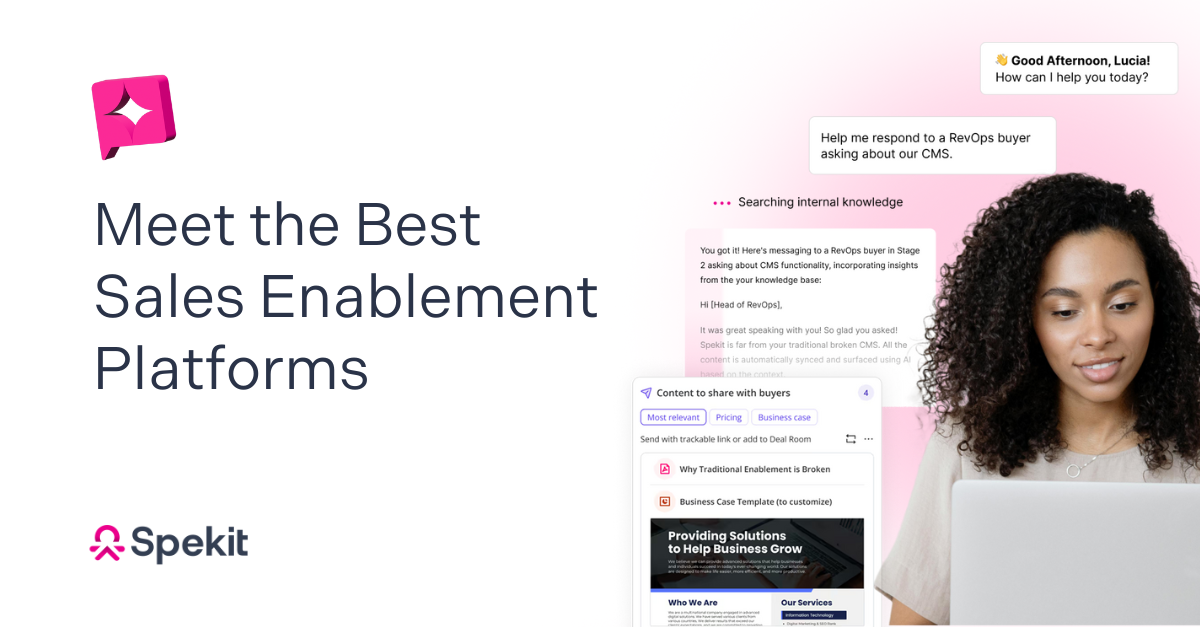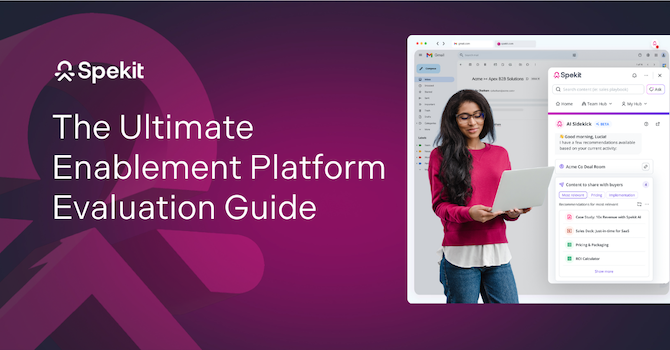Sales enablement software is no longer a ÔÇťnice-to-have.ÔÇŁ ItÔÇÖs a revenue-critical system that drives adoption, accelerates ramp, and connects content to measurable sales outcomes. Yet, most organizations still struggle to realize that impact.
According to , 85.4% of enablement teams have steady or increasing budgets, but adoption remains low ÔÇö 75% of sales leaders log into their enablement platforms fewer than five times per quarter.
Even more telling, nearly half (48.8%) of teams say at least 40% of their sales content is outdated or unused. The result: wasted spend, fragmented workflows, and missed revenue opportunities.
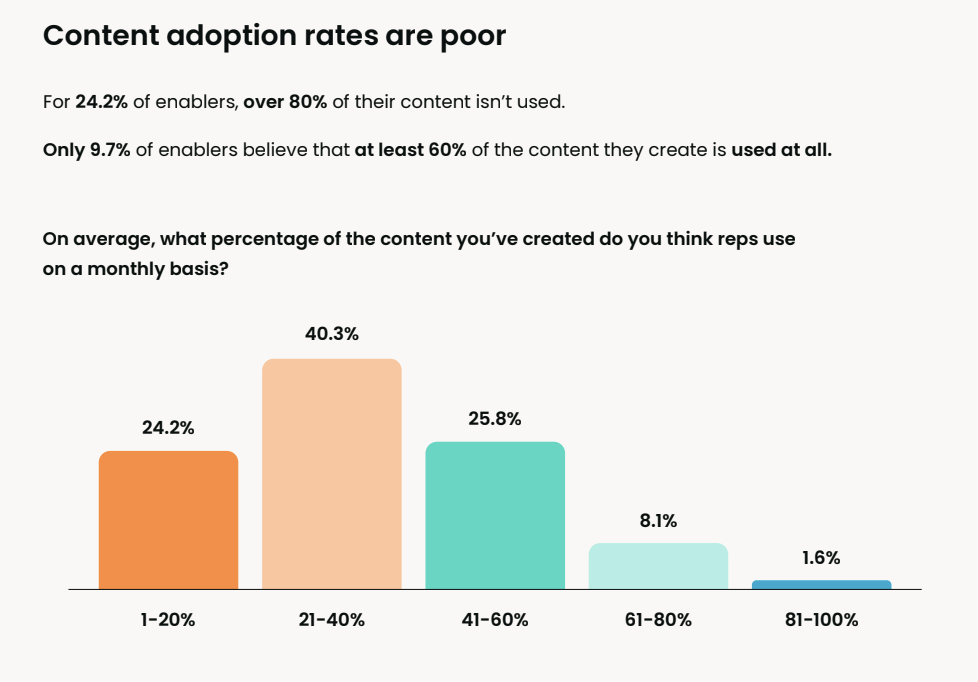
Modern enablement leaders are shifting focus, from feature-heavy platforms to just-in-time enablement solutions that integrate directly into the flow of work. Instead of asking reps to log into another tool, the next generation of AI sales enablement platforms surfaces training, content, and context automatically in Salesforce, Slack, and email.
By combining content management, sales readiness, and AI-powered guidance with built-in governance and reporting, todayÔÇÖs top platforms donÔÇÖt just distribute content, they drive measurable performance improvements. Teams using connected, workflow-based enablement systems report 69% more time selling, 20% higher quota attainment, and 30% faster ramp time compared to those relying on traditional tools.
In this guide, youÔÇÖll learn:
- What defines modern sales enablement software in 2025
- Why just-in-time enablement has become the standard for effective revenue teams
- How to evaluate and compare the best AI-powered enablement platforms for your business
- Where platforms like ║┌┴¤│ď╣¤═° deliver measurable ROI by aligning content, training, and workflows around your reps
The right enablement platform isnÔÇÖt just about delivering content, itÔÇÖs about creating clarity, consistency, and confidence for every rep in every interaction.
What is Sales Enablement?╠ř
Sales enablement is the discipline of equipping revenue teams with the knowledge, content, and training they need to execute with consistency and confidence. But as detailed in , enablement is evolving from a static content hub to a dynamic system of delivery, one that puts the right information in front of sellers at the exact right moment.
Traditional enablement focused on storing and sharing sales materials. Modern AI sales enablement shifts that focus to access, adoption, and impact. It integrates guidance and content directly into the sellerÔÇÖs workflow, whether thatÔÇÖs Salesforce, Gmail, or a call intelligence tool, so reps can learn, adapt, and act without losing momentum.
At its core, effective sales enablement connects five pillars:
- Content Management and Governance: Maintaining a single, accurate source of truth where sales content is current, organized, and trusted.
- Just-in-Time Enablement: Surfacing knowledge directly within the tools and moments where selling happens, not in separate dashboards.
- Sales Readiness and Coaching: Delivering bite-sized learning and reinforcement in real time to strengthen confidence and retention.
- AI-Driven Insights: Using contextual intelligence to recommend next steps, identify gaps, and measure what drives revenue.
- Cross-Functional Collaboration: Uniting sales, marketing, and customer success around consistent messaging and shared outcomes.
This shift from event-based training to continuous enablement in the flow of work is transforming how teams sell and scale.
In todayÔÇÖs market, sales enablement isnÔÇÖt about adding another platform. ItÔÇÖs about building a connected system that ensures every rep, at every stage of the sales cycle, has instant access to accurate, actionable guidance, driving consistency, productivity, and measurable revenue growth.
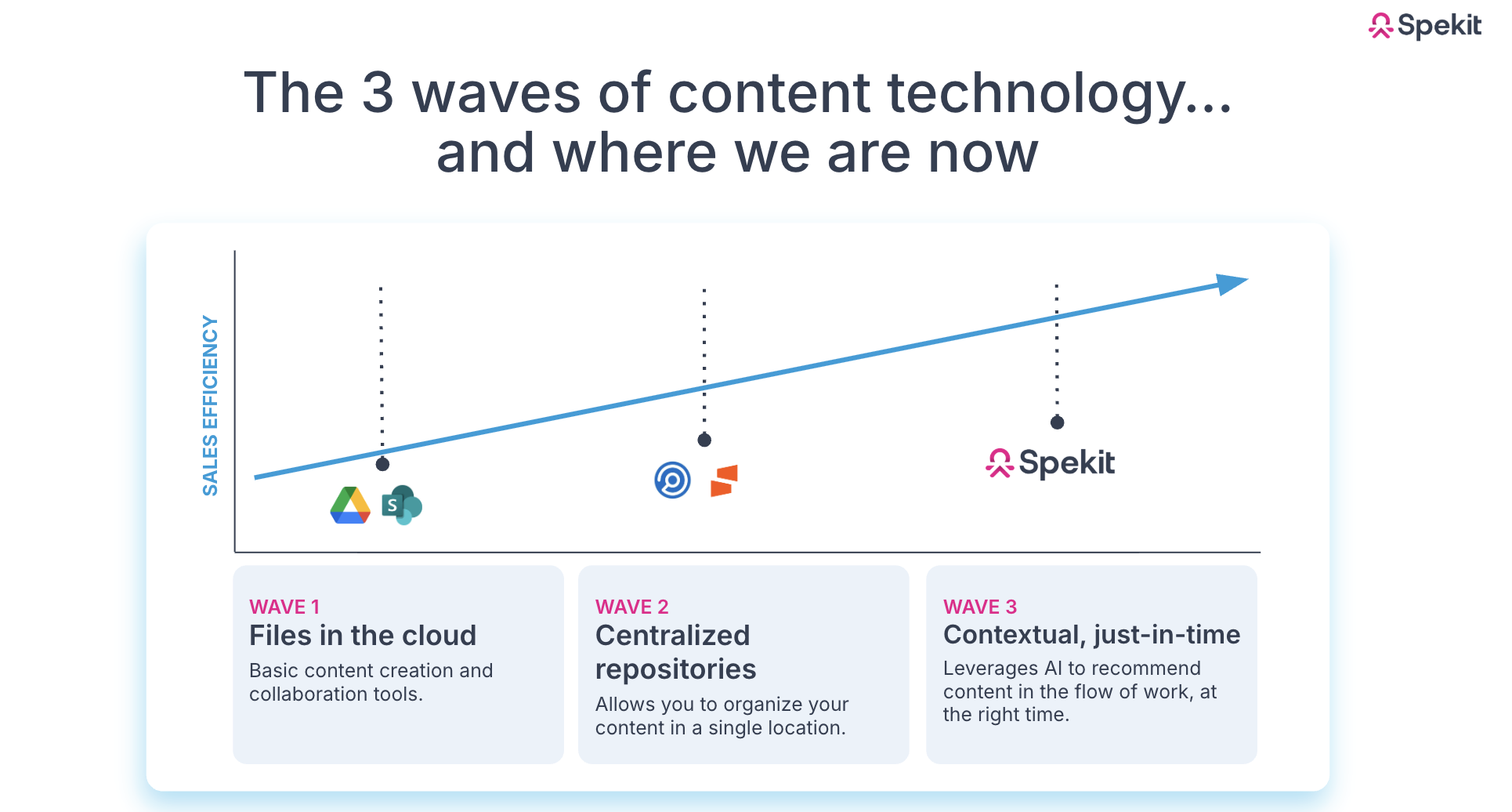
What Are Sales Enablement Platforms?╠ř
A sales enablement platform is the technology layer that connects people, content, and insights to help revenue teams execute effectively. It turns enablement strategy into daily action by centralizing resources and embedding them into the tools reps already use.
The book defines these platforms as systems that deliver enablement at the moment of need. Instead of forcing sellers to search through disconnected tools, modern AI sales enablement platforms identify what a rep is working on and surface the most relevant content, playbook, or step directly in-app.
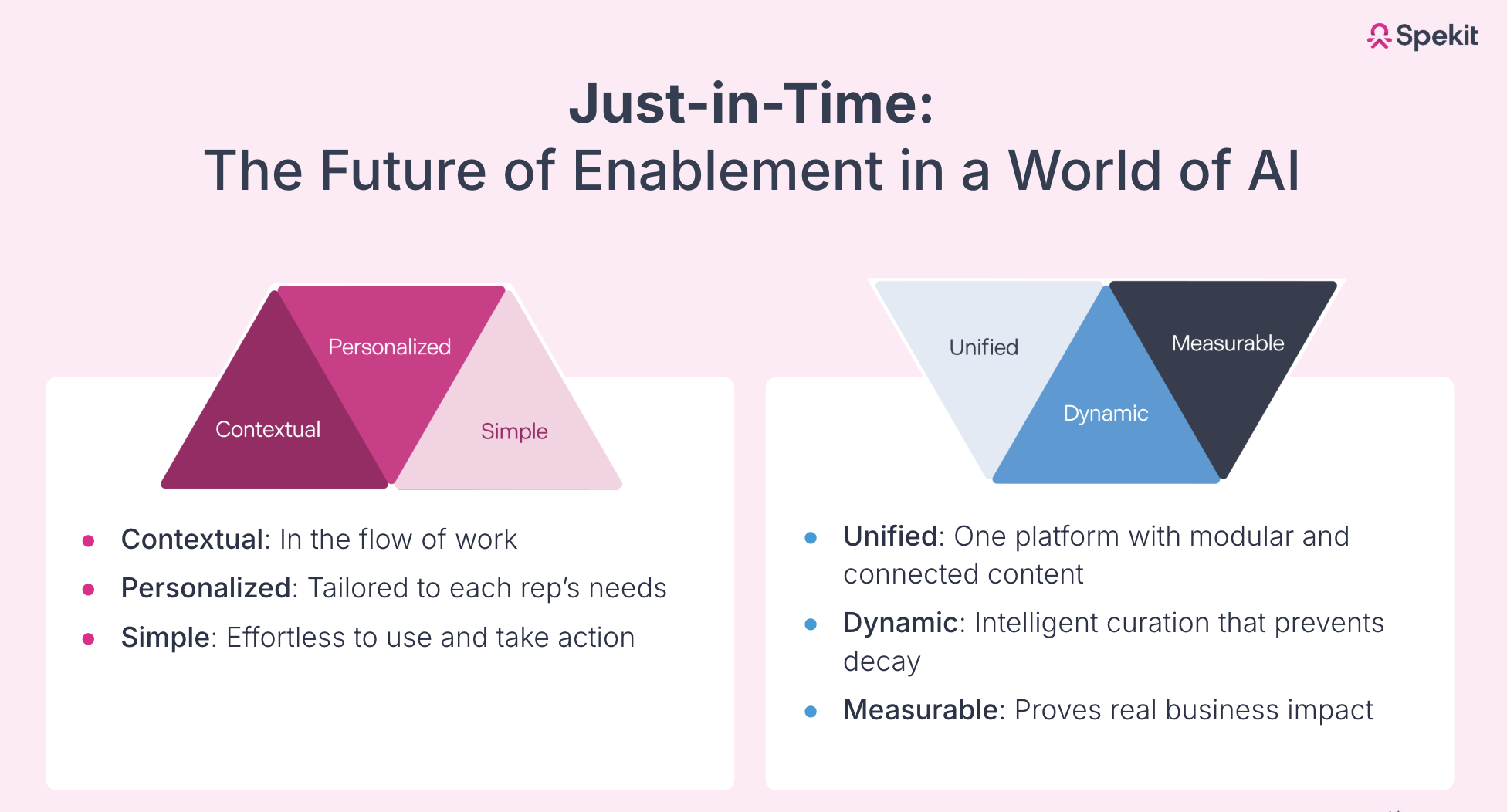
Core capabilities include:
- Content management and governance to ensure every asset is accurate and easy to find.
- In-the-flow delivery through CRM, email, and collaboration integrations that reduce context switching.
- AI-driven recommendations that provide next-best actions, personalized guidance, and automation.
- Analytics and reporting that tie enablement activity to revenue impact.
According to The Impact of Enablement Report, while most teams have steady budgets, adoption remains low because content isnÔÇÖt accessible where reps work. Platforms that deliver guidance in-flow, not in another dashboard, see higher usage and stronger ROI.
In short, a sales enablement platform transforms static enablement into a continuous, data-driven system that improves productivity and connects every activity to measurable business outcomes.
Best Sales Enablement Platforms & Apps
These are the best sales enablement platforms and apps to choose from:
1. ║┌┴¤│ď╣¤═°
ÔÇŹ

║┌┴¤│ď╣¤═° is the modern AI-powered enablement platform that unifies content management, enablement, and personalized guidance to help revenue teams automate workflows and close deals quicker.
The platform combines an intelligent content management platform with AI Sidekick, the just-in-time sales assistantÔäó that leverages signals from CRM, call intelligence, and communication tools to deliver personalized guidance, content, and recommendations directly to reps right within their flow of work.
Sidekick embeds contextual AI agents into a repÔÇÖs daily tasks to anticipate needs and automate workflows like curating and creating content, or building Deal Rooms. By surfacing personalized guidance and resources directly in their flow of work, Sidekick enables reps to prepare for calls, follow up, and launch custom Deal Rooms in seconds.
Where traditional enablement platforms rely on static portals and manual content management, ║┌┴¤│ď╣¤═° automates access, governance, and measurement. Its AI Sidekick understands what a rep is doing and recommends next-best actions, playbooks, or deal content in real time. This keeps information relevant, reduces time spent searching, and ensures sellers always operate with the most accurate materials.
ÔÇŹKey Features
- AI Sidekick: A contextual assistant that identifies what a rep is working on and delivers tailored guidance, templates, and next steps directly in their workflow.
- Centralized Content Management: A unified repository for playbooks, collateral, and knowledge with real-time syncing from Google Drive, SharePoint, and Confluence.
- Governance Dashboards: Automated freshness checks, ownership tracking, and duplicate detection to maintain content accuracy and trust.
- Deal Rooms: Personalized, trackable hubs for sharing sales materials with buyers and viewing engagement insights.
- AI Authoring Tools: Create or summarize playbooks, call guides, and process documentation in minutes with the ║┌┴¤│ď╣¤═° AI Editor.
- Analytics and Revenue Insights: Dashboards that connect buyer engagement and enablement usage to influenced pipeline and closed-won deals in Salesforce.
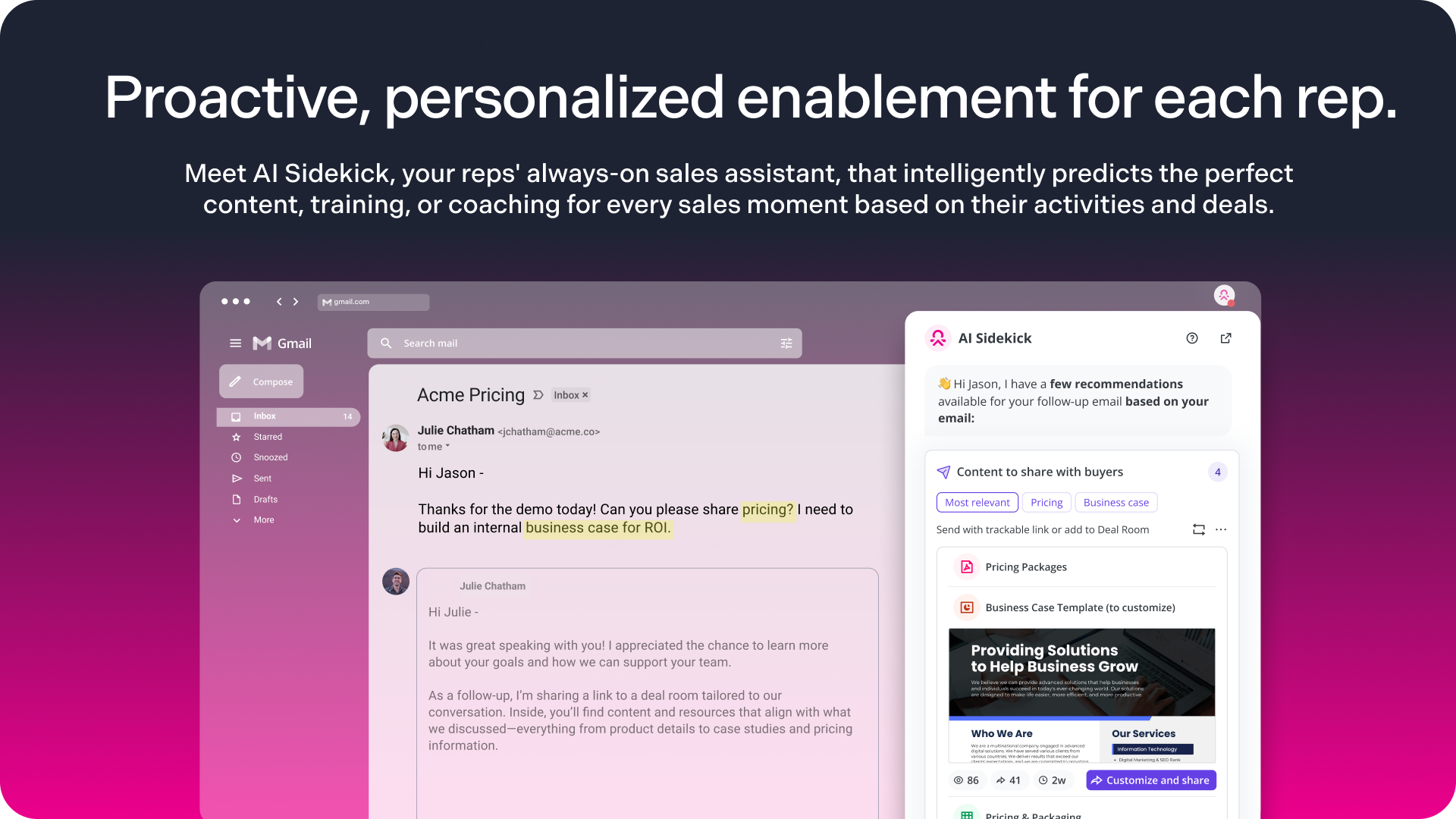
What Makes ║┌┴¤│ď╣¤═° Different
- Just-in-Time Enablement, Not One More Tool: ║┌┴¤│ď╣¤═° delivers knowledge, playbooks, and processes directly into the tools your teams already use like Salesforce, Slack, Outlook, LinkedIn, and more. No switching tabs or hunting through folders. Reps stay focused, productive, and confident.
- Unified Content Management and Governance: ║┌┴¤│ď╣¤═° replaces scattered repositories with a single, intelligent content layer. Content stays accurate and trusted through real-time syncing, AI deduping, automated freshness alerts, and ownership tracking so enablement teams spend less time managing and more time enabling.
- Context-Aware Intelligence: ║┌┴¤│ď╣¤═°ÔÇÖs proprietary context engine reads what a rep is doing, like writing an email, updating an opportunity, or preparing for a call, and recommends the most relevant content, playbook, or Deal Room instantly. Enablement becomes predictive, not reactive.
- Adoption Through Simplicity: The platform is designed for daily use, not quarterly check-ins. With ║┌┴¤│ď╣¤═°, enablement lives where work happens, driving consistent adoption and engagement across teams without additional lift from RevOps or IT.
- Proven ROI and Revenue Connection: Every ║┌┴¤│ď╣¤═° interaction is measurable. Built-in Revenue Insights link content usage and buyer engagement directly to influenced pipeline and closed-won deals in Salesforce, giving enablement leaders a clear line to business impact.
- AI-Powered Content Authoring and Maintenance: From summarizing long documents to creating playbooks or translations in minutes, ║┌┴¤│ď╣¤═° AI accelerates content creation and automates upkeep keeping every asset relevant, accurate, and aligned to your go-to-market messaging.
║┌┴¤│ď╣¤═° ROI & Customer Impact
║┌┴¤│ď╣¤═° isnÔÇÖt just easier to use, it delivers measurable business impact from day one.
Across industries, teams see clear gains in adoption, ramp speed, and productivity after bringing enablement into the flow of work.
Proven results from ║┌┴¤│ď╣¤═° customers include:
- 69% more time spent selling by eliminating context switching and centralizing enablement in daily workflows.
- 20% higher quota attainment as reps consistently access up-to-date content and deal guidance.
- 30% faster ramp time through contextual onboarding and in-app learning.
- 50% reduction in content upkeep with automated governance and AI-powered content deduping.
- 3x increase in enablement adoption across sales, support, and customer success teams.
Organizations like ZoomInfo, The ALS Association, and Southwest Airlines use ║┌┴¤│ď╣¤═° to turn static enablement programs into continuous, measurable growth engines. As Samantha Luke, Director of Training and Support at The ALS Association, explains, ÔÇťWith ║┌┴¤│ď╣¤═°, enablement is transformed from an event or a destination to a living, connected part of the employee experience.ÔÇŁ
║┌┴¤│ď╣¤═° gives revenue teams the clarity and confidence to perform at their best and the data to prove enablementÔÇÖs impact on every deal.
ÔÇŹVisit ║┌┴¤│ď╣¤═° to learn more╠ř
2. Seismic

ÔÇŹSeismic offers sales enablement solutions for mid-market and enterprise businesses. It's a sales content management platform that offers a content library for sales teams to manage their sales content and resources. It also provides content automation and in-context recommendations for sales reps to find sales collateral. Its meetings platform gives sellers access to recordings from previous meetings.╠ř
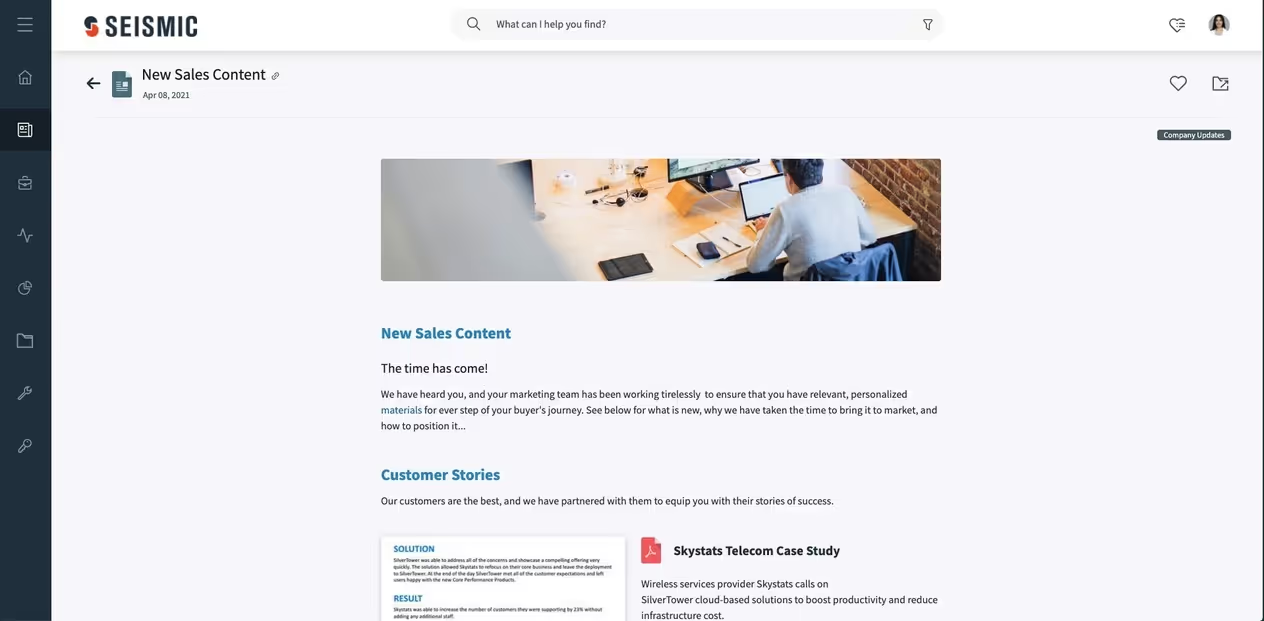
ÔÇŹKey Features:
- Customizable content library
- LiveSend for capturing buyer engagement with shared content╠ř
- In-app search and in-content recommendations
Integrations: Gmail, HubSpot, Snowflake, Salesloft, Salesforce╠ř
3. Mindtickle

is a sales readiness and revenue productivity platform built to offer sales enablement, training, and call insights. Users can access sales content, track sales training and seller readiness, and access sales conversations.

ÔÇŹKey Features:
- Sales content management hub╠ř
- Digital Sales Rooms (DSRs)
- Conversation intelligence╠ř
- Analytics and dashboards╠ř
Integrations: Salesforce, Dropbox, Okta, Google, IBM cloud
4. SalesHood

sales enablement platform that enables users on how to engage customers. It provides an AI coach to help onboard new reps, train reps and guide sales teams to sell effectively. With Saleshood, buyers and sellers can collaborate on both private and public websites.╠ř
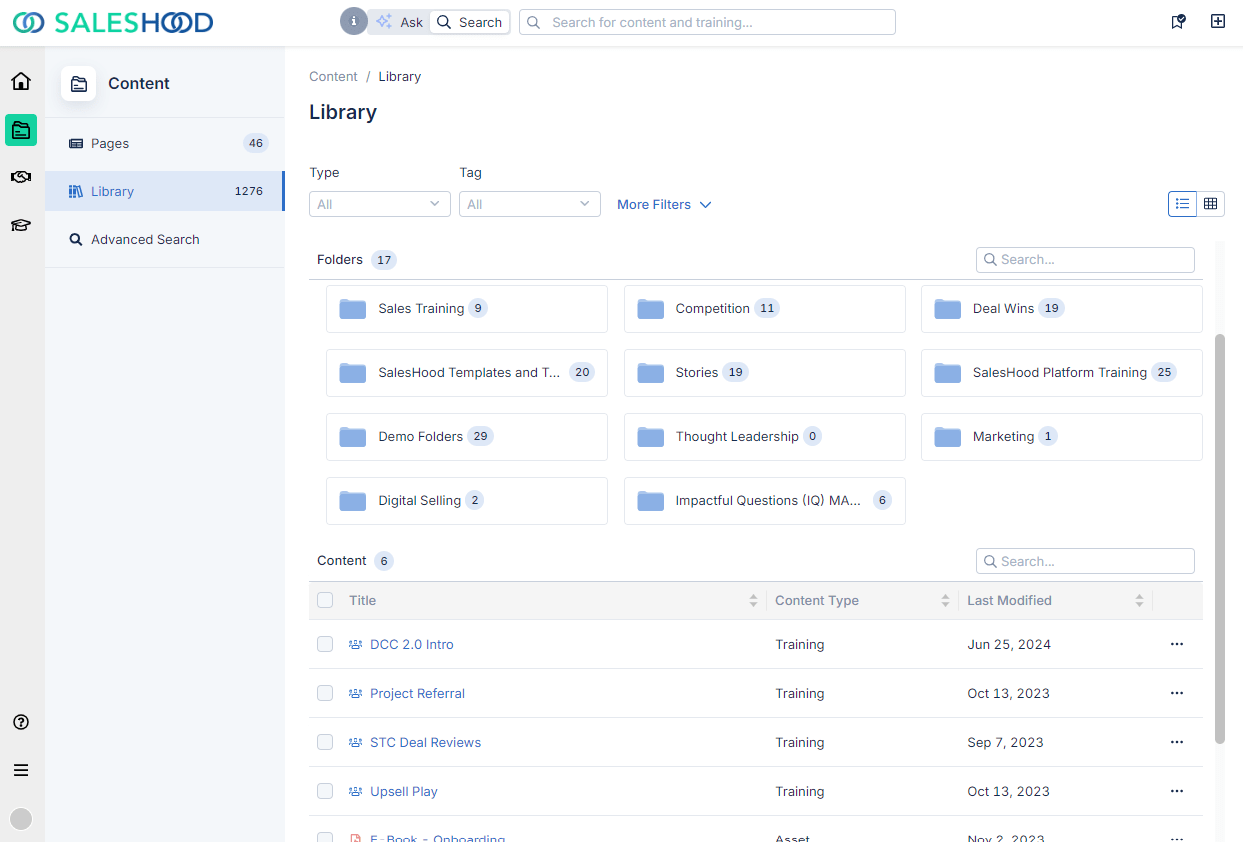
ÔÇŹKey Features:
- Generative AI coaching╠ř
- Guided selling╠ř
- Sales content analytics and audit╠ř
- Digital sales rooms╠ř
Integrations: Microsoft Dynamics, Power BI, Slack, Tableau, Dropbox Business
5. Showpad

Showpad eOS is a sales content management platform that primarily functions as a centralized content repository. It enables basic collaboration between sales, marketing, and revenue teams, helping organizations store, organize, and distribute sales materials and training resources, but offers limited in-workflow enablement or advanced contextual delivery.
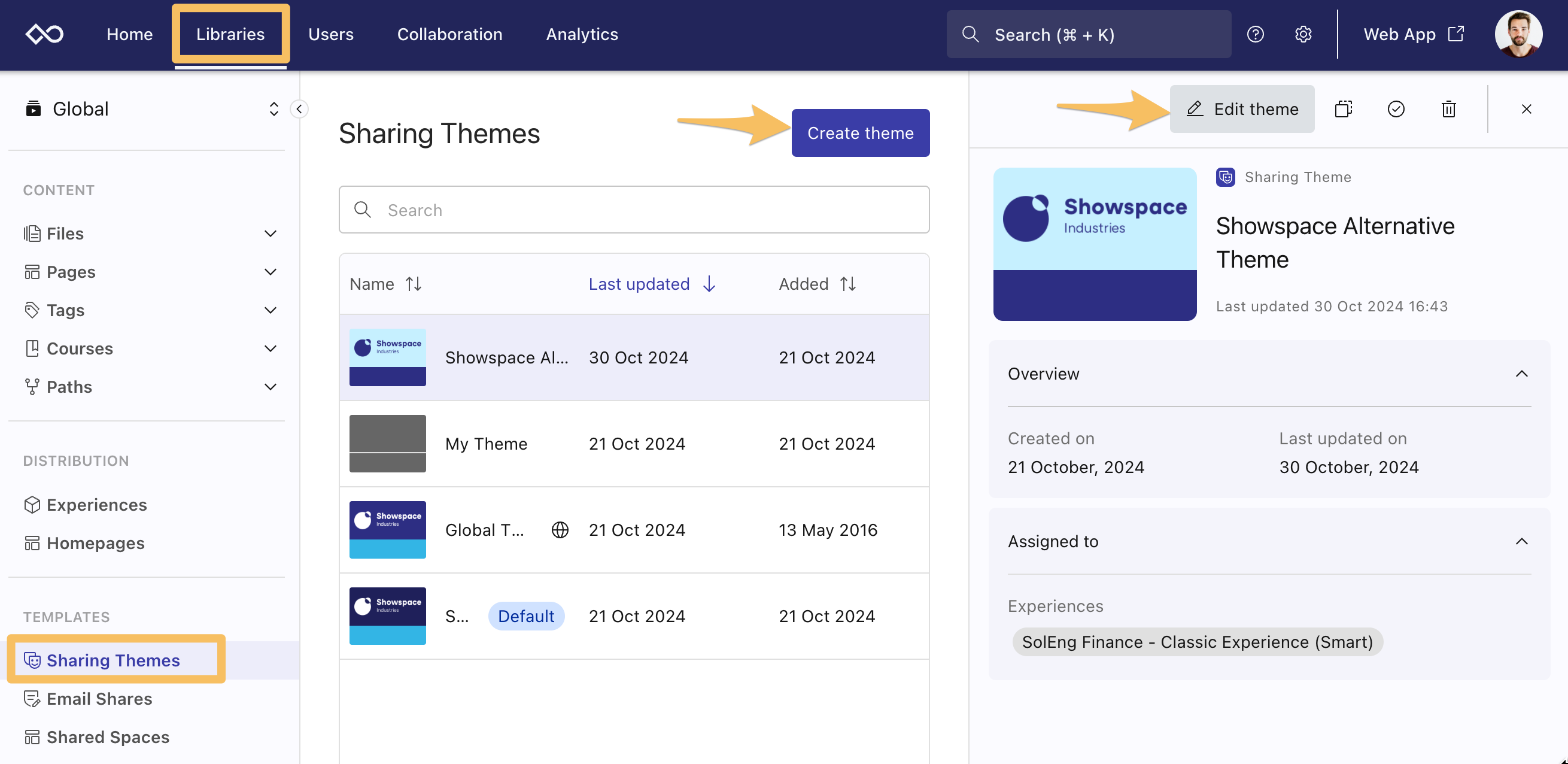
ÔÇŹKey Features:
- Sales content management platform╠ř
- 3D/360 immersive showrooms for buyer engagement╠ř
- AI-powered coaching and training effectiveness tools╠ř
- AI-generated insights and visualizations╠ř
Integrations: Salesforce, Slack, Marketo, Gmail, Outlook╠ř
Read: 10 Best Showpad Alternatives for Sales Enablement in 2025
6. Confluence╠ř

is an enterprise content management system (ECM) software built by Atlassian.╠ř It supports centralized knowledge management, project collaboration, and company-wide communication to connect work across teams.╠ř
Confluence also provides flexible workspaces and customizable strategy planning templates. For efficient project collaboration, Confluence allows team members to work in real time on the same document.╠ř
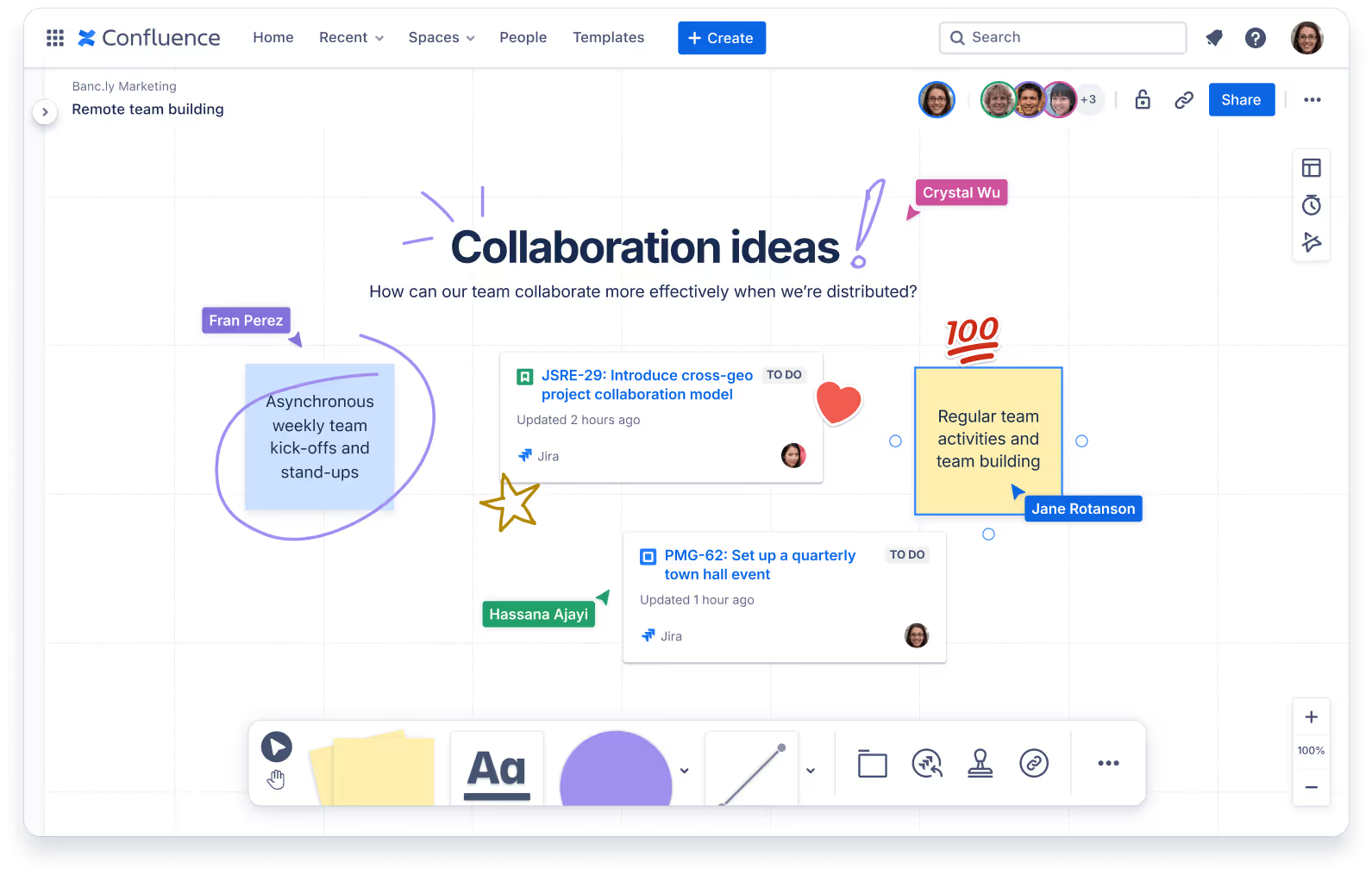
ÔÇŹKey Features:
- Built-in Jira integrations
- In-app alerts and notifications
- Advanced and intuitive search╠ř
- AI-powered content creation
Integrations: Trello, Dropbox, Figma, Google Drive, Gliffy
7. GetAccept

sales enablement platform combines a digital salesroom, deal room, and contract room to enable the sales team to access sales materials, live chat with buyers, collaborate with other internal teams and external partners, and create customer contracts using interactive branded templates.╠ř
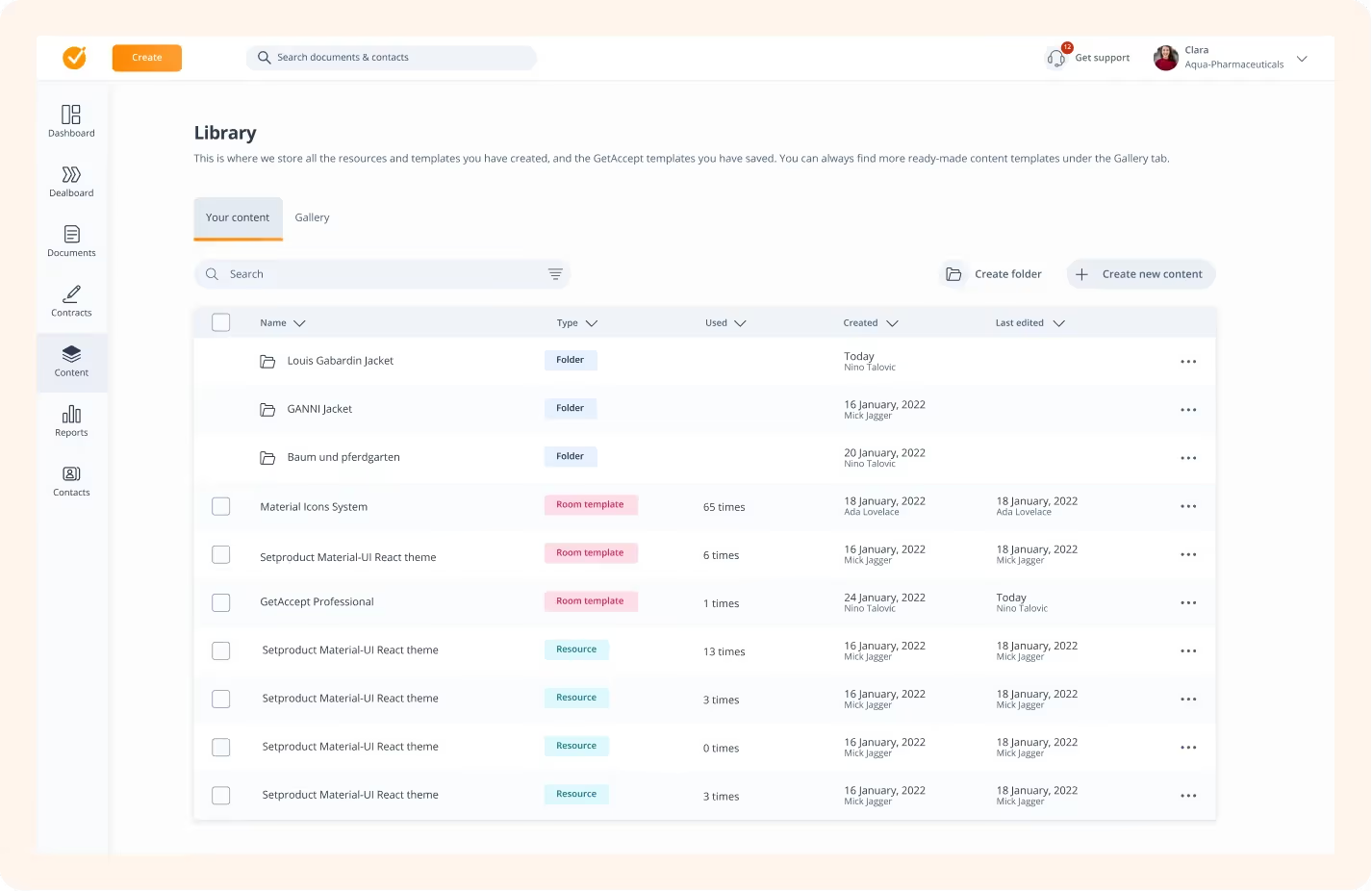
Key Features:
- Sales content management╠ř
- Configure, price, quote (CPQ)
- Tracking and analytics╠ř
- In-app notifications and reminders╠ř
Integrations: Salesforce, Hubspot, Pipedrive, Slack, Gmail
8. Paperflite

is built to help marketing and sales teams manage their sales content on its sales enablement content management platform. Users can access sales materials, build custom microsites, and track prospect engagement with sales content and websites.╠ř
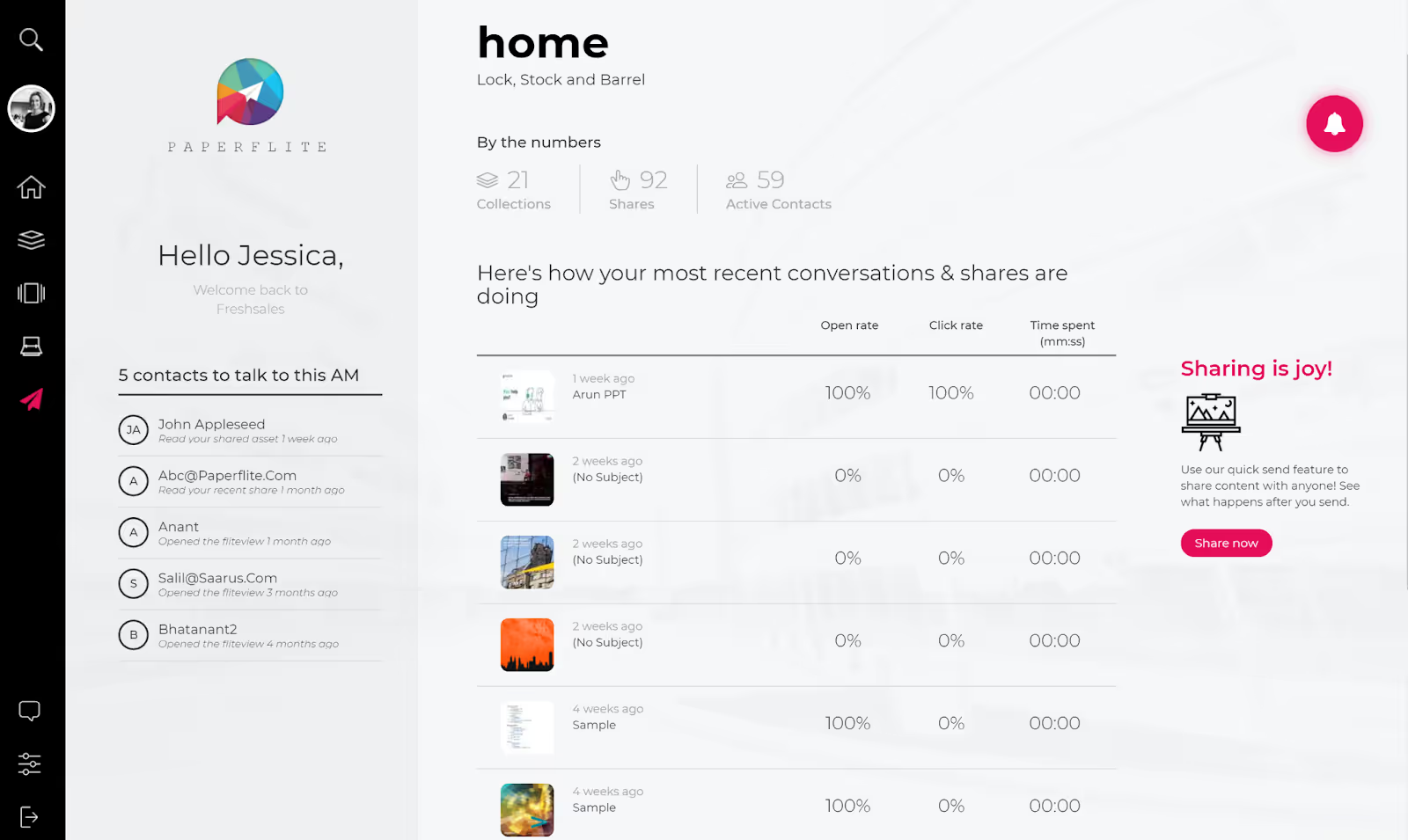
Key Features:
- Live engagement tool that notifies reps when sellers engage with sales content
- Customer engagement analytics╠ř
- Contextual queries and information search╠ř
- Email attachment tracker
Integrations: Eloqua, HubSpot, Salesforce, Dropbox, Google Drive
11. Membrain

is a for B2B sales with solutions for sales coaching, strategy optimization, and process execution. It offers three distinct products to support specific sales workflows: prospecting, active pipeline, and account growth. Popup lessons can also be enabled to provide ideal recommendations on sales content and strategy and ensure that reps are educated on the proper steps to take.╠ř
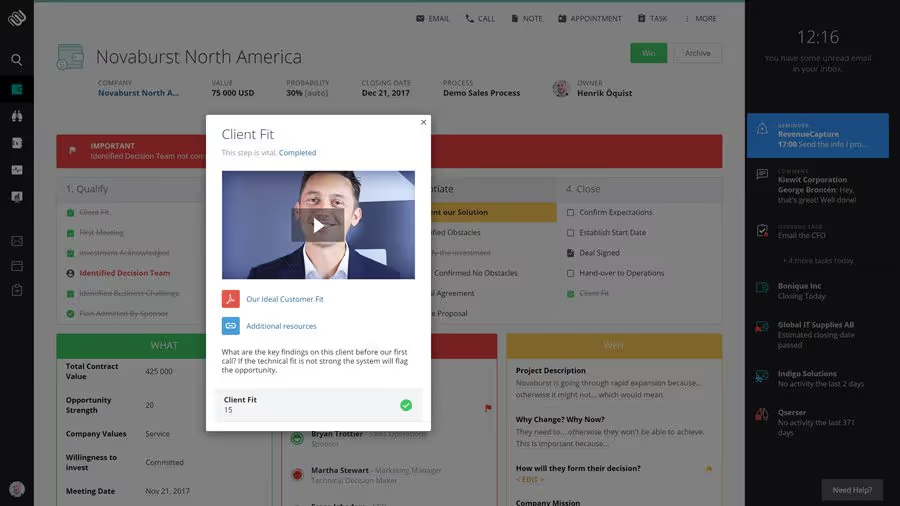
ÔÇŹKey Features:
- Content hub
- Analytics and reporting
- Built-in communication and productivity tools╠ř
- Task automation engine╠ř
Integrations: Zoom, Zapier, Zendesk, Google Calendar, Office 365
9. Outreach

ÔÇŹ is a sales execution platform built for sellers, sales leaders, sales operations, and front-line managers. It offers businesses ensure data governance, permissions tracking, and APIs for building personalized websites.╠ř
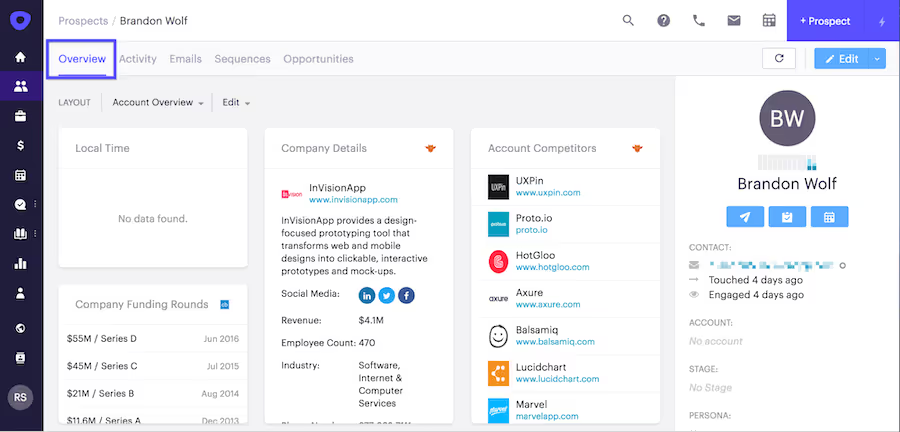
ÔÇŹKey Features:
- Sales forecasting tool
- Knowledge base
- Conversation intelligence tool
- Sales coaching/training platform
Integrations: HubSpot, Gmail, LinkedIn Sales Navigator, 6sense, Showpad
10. Bigtincan
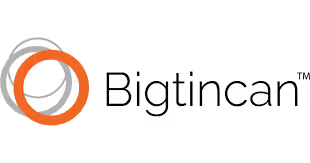
is a sales enablement and content management platform that primarily functions as a centralized content repository. It allows teams to store, organize, and distribute sales and marketing collateral but operates more as a traditional content hub than a workflow-based enablement system.
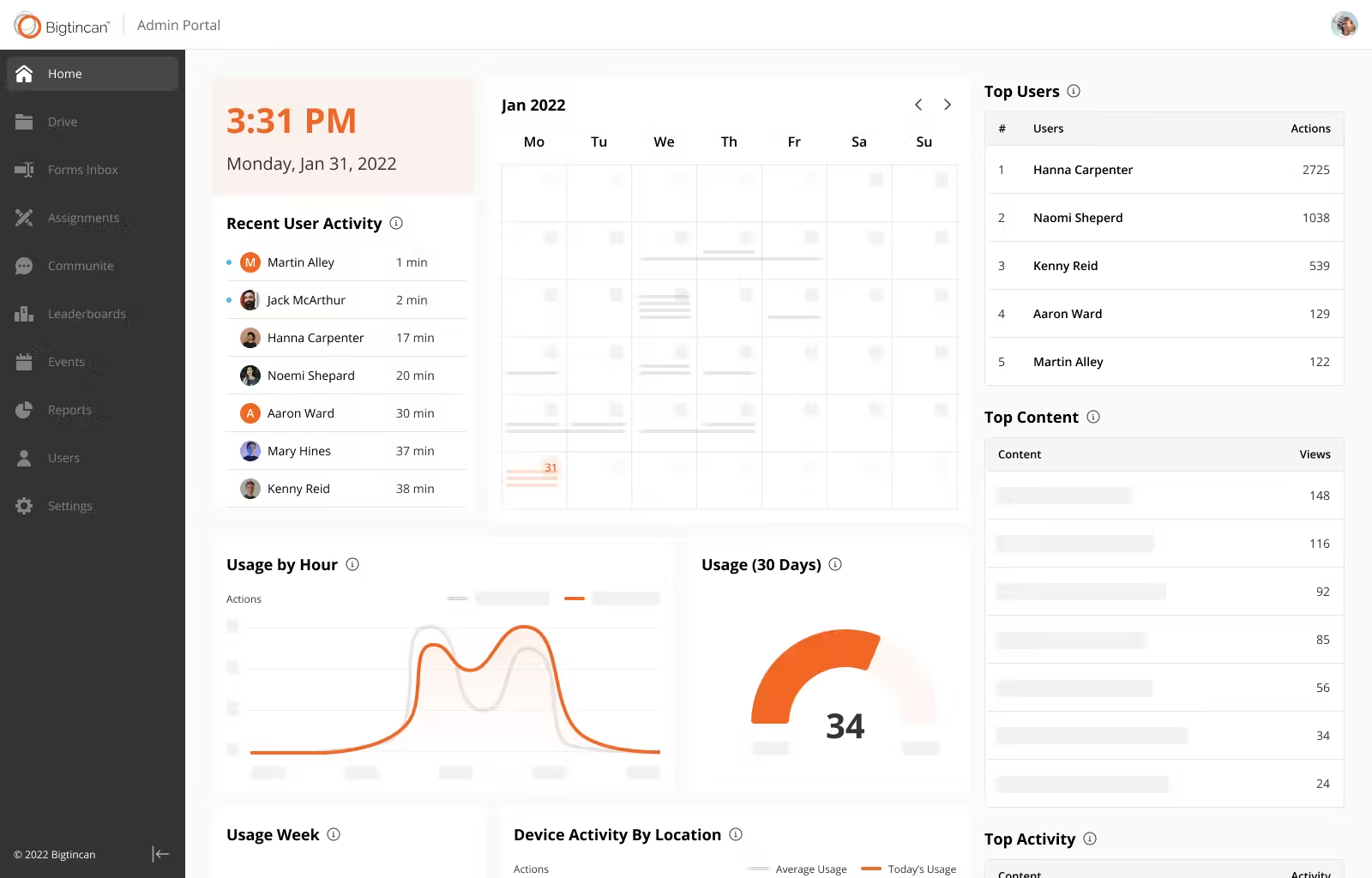
ÔÇŹKey Features:
- Conversation and customer relationship intelligence╠ř
- Sales AI╠ř
- Document automation
- Sales content personalization
Integrations: Microsoft Teams, Salesforce, Outreach, Hexnode, Dropbox╠ř
Read: 10 Best Bigtincan Alternatives for Sales Enablement in 2025
11. Guru╠ř
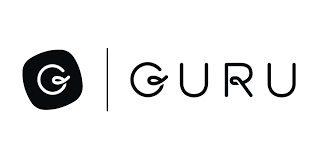
Guru is an AI-enabled enterprise knowledge management tool that primarily serves as a digital wiki. It allows teams to store internal documentation, connect various content sources, and share company knowledge across departments. The platform centralizes static information but operates more as a knowledge repository than an active enablement system.
While Guru offers basic integrations and in-context recommendations, most users rely on it for reference rather than daily guidance. Many teams report frustration with its search accuracy and content discoverability, as information often becomes buried or outdated without clear ownership or governance.
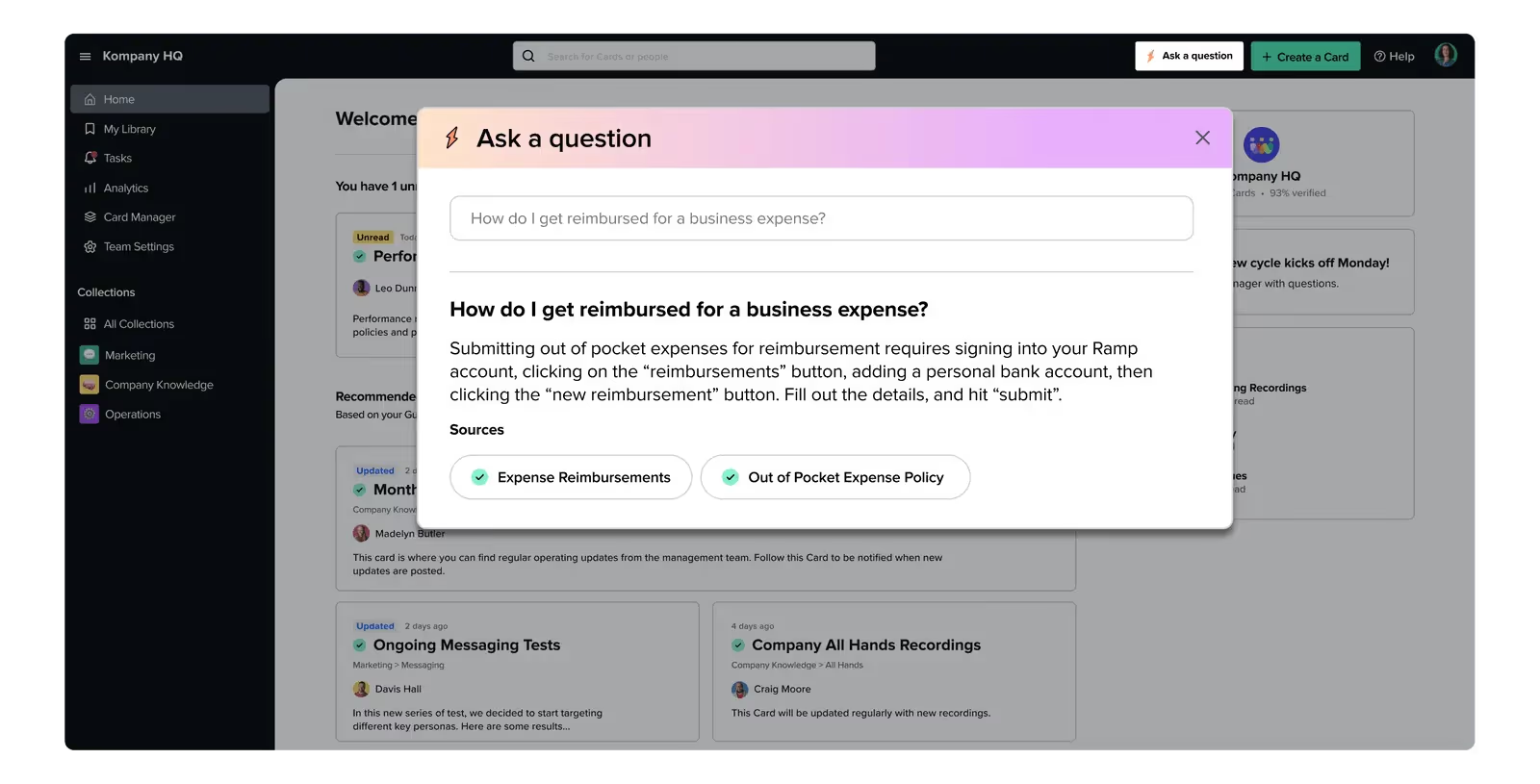
Key Features:
- Enterprise AI search╠ř
- AI-powered content suggestions and recommendations╠ř
- Collaborative content editor╠ř
- Customizable API
Integrations: Chrome extension, Zapier, Zendesk, Workday, Slack╠ř
12. Allego
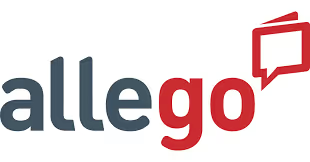
AllegoÔÇÖs is a sales enablement platform that emphasizes peer-to-peer learning, mobile video sharing, and conversation intelligence. It helps teams record and review sales calls, deliver coaching feedback, and host sales content for on-demand access. While Allego includes features for content management and learning delivery, its design centers around asynchronous video coaching rather than real-time, in-workflow enablement.

Key Features:
- Digital sales rooms╠ř
- Sales content management╠ř
- Conversation intelligence╠ř
- Sales coaching and learning╠ř
Integrations: Google, Salesforce, Adobe Experience Manager, Aircall, TalentLMS
13. Salesloft

offers four sales enablement software products: Cadence, Conversations, Deals, and Forecasts. It enables users to build and nurture their sales pipeline, find insights from conversations, coach reps on engaging customers better, manage and forecast pipelines, and estimate future sales outcomes.╠ř
It also has an AI-powered buyer engagement platform that provides conversation intelligence, intelligent search, and contextual recommendations to deliver personalized buyer experiences.╠ř
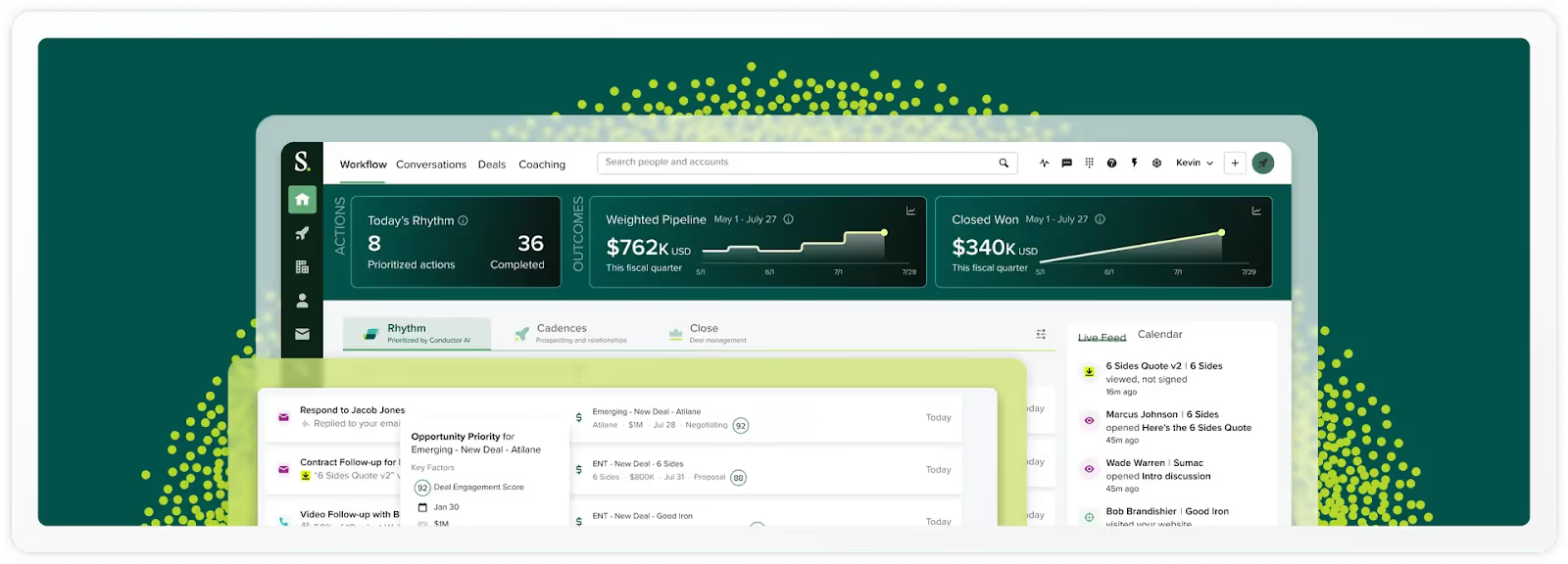
Key Features:
- Sales performance dashboard╠ř
- Call recording tool╠ř
- Deal intelligence platform
- Cold email software╠ř
Integrations: Allegrow, Genesys, Zoom Phone, Act HQ, CoffeeAI
14. Clearslide

is built for sales, sales leaders, marketing, and customer success teams. Its sales engagement platform supports sales content management, communications between teams, and sales intelligence to enable sellers to engage with buyers effectively. ClearslideÔÇÖs platform offers content management, communication tools, and customer engagement insights for reps to control the sales cycle fully.╠ř
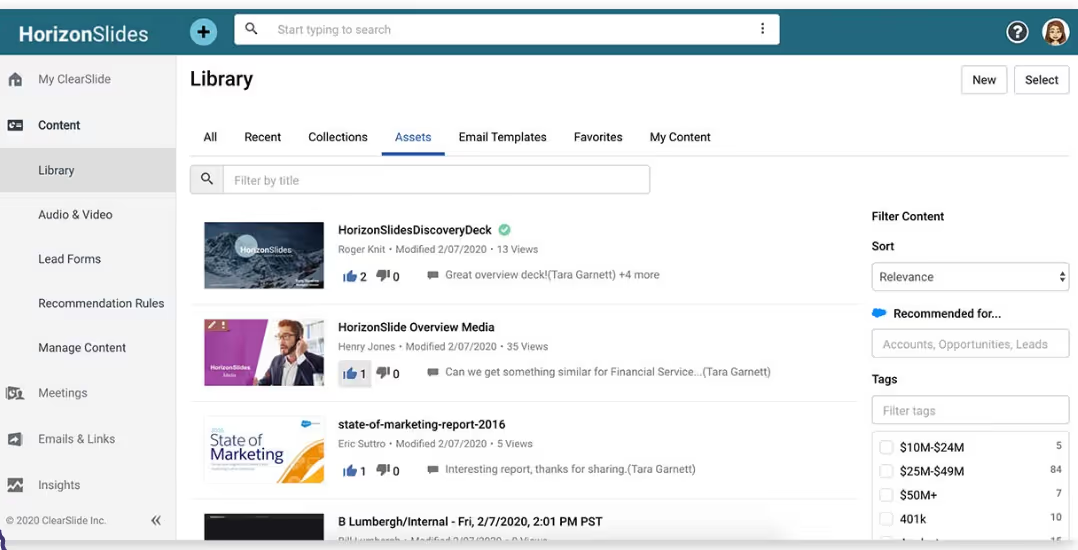
Key Features:
- Sales and marketing content hub╠ř
- Email tracking and campaigns
- Web conferencing╠ř
- Engagement analytics╠ř
Integrations: Salesforce, Slack, Microsoft Dynamics, Dropbox, Gmail
15. Klue
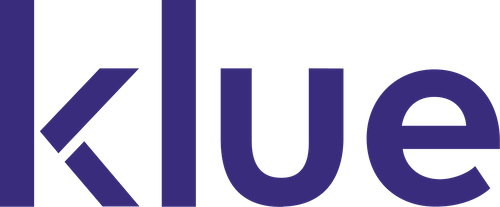
ÔÇŹ provides a competitive sales enablement platform that enables users to automate the creation and delivery of competitive sales content like battle cards, competitor profiles, etc, on a centralized platform. It also lets users measure the impact of content on revenue, sales cycle length, win rates, and other metrics.╠ř╠ř
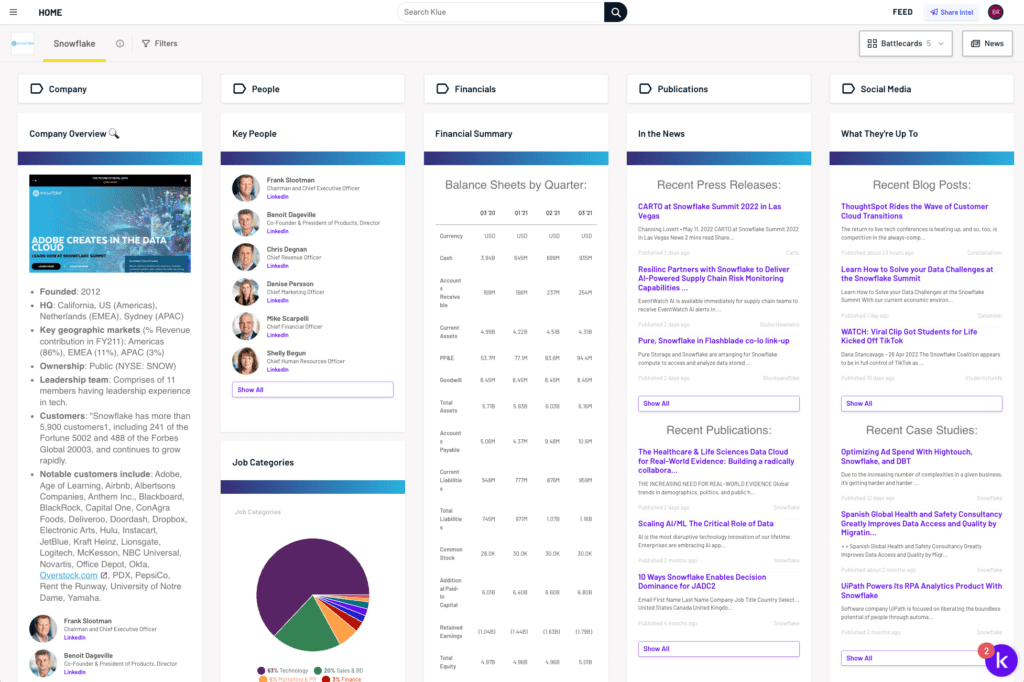
ÔÇŹKey Features:
- Advanced search feature╠ř
- AI-powered sales content creation
- Sales content management╠ř
- Analytics and reporting╠ř
Integrations: Salesforce, Slack, Showpad, Hubspot, Seismic╠ř
Features of Modern Sales Enablement Software
The best sales enablement software connects people, content, and data in one intelligent system. Traditional tools focus on storage or training; modern enablement platforms use AI, automation, and context to deliver the right knowledge at the right time within the sellerÔÇÖs workflow.
Here are the core features to look for in a best-in-class AI sales enablement platform.
1. Intelligent Content Management
A unified content management platform (CMS/KMS) is the foundation of effective enablement. It centralizes sales playbooks, collateral, and knowledge so reps spend less time searching and more time selling.
According to The Impact of Enablement Report (2025), 60% of teams switch platforms because of difficult content management and content decay.
║┌┴¤│ď╣¤═° solves this by combining AI-powered content management with built-in governance. Content from Confluence, Google Drive, or SharePoint syncs automatically, while duplicate detection, freshness alerts, and ownership tracking keep materials current and trusted.
Result: A single, intelligent content layer that keeps knowledge accurate, accessible, and measurable.
Explore ║┌┴¤│ď╣¤═°'s content management capabilities here.
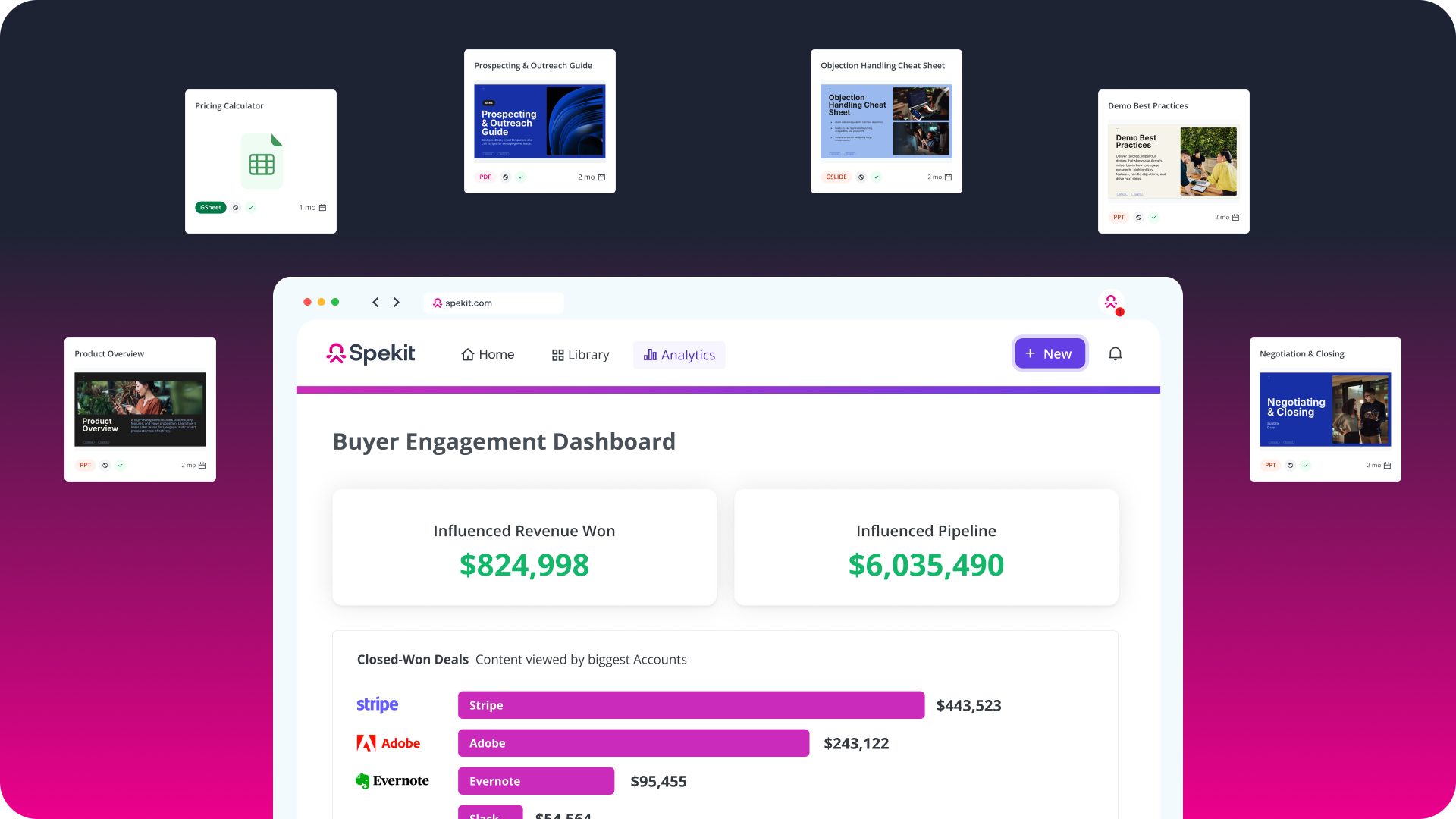
2. AI-Powered Content Creation
Manual content creation slows enablement down. AI authoring tools now accelerate everything from sales scripts to product training.
║┌┴¤│ď╣¤═°'s AI Editor streamlines this process by summarizing, re-writing, and translating enablement content in seconds. Teams can generate new playbooks or persona guides instantly, cutting creation time by over 50%.
Reps respond faster to buyers. Enablement teams publish updates the same day.
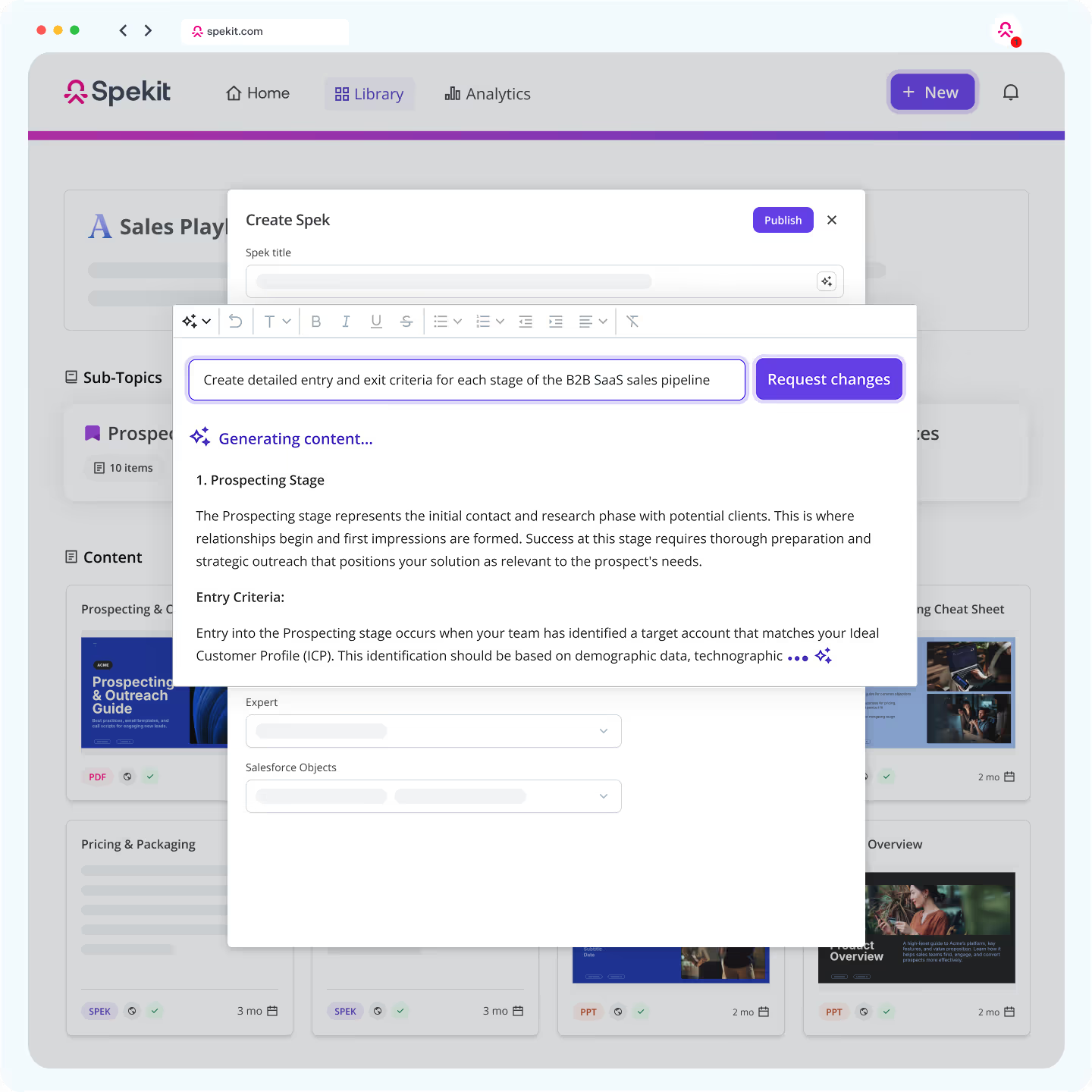
3. Enablement in the Flow of Work
Just-in-Time Enablement, a concept pioneered in Just-in-Time: The Future of Enablement in the World of AI, means delivering enablement where work happens, not in a separate platform.
║┌┴¤│ď╣¤═°ÔÇÖs AI Sidekick surfaces contextual guidance inside Salesforce, Slack, Outlook, and Chrome. Whether composing an email or updating an opportunity, reps get instant recommendations for the right content or next best action without leaving their workflow.
No tab switching. No searching. Just enablement that moves at the speed of work.
4. Trackable Links & Deal Rooms
Deal Rooms turn static content into collaborative buyer experiences.
║┌┴¤│ď╣¤═°'s Deal Rooms let reps share personalized, trackable links that show who viewed what and when. Each room syncs automatically with CRM and updates in real time. AI Sidekick recommends relevant assets based on opportunity data, so every buyer interaction is timely and targeted.
Reps see engagement in real time; leaders see which content drives pipeline.
.avif)
5. Automated Governance
Content governance ensures accuracy and trust. Traditional repositories rely on manual reviews, which quickly lead to content decay, something 48.8% of teams say affects 40%+ of their content.
║┌┴¤│ď╣¤═°ÔÇÖs Governance Dashboards automate oversight with freshness alerts, duplicate detection, and usage analytics. Admins can flag outdated assets, assign reviewers, and monitor adoption by team.
Governance runs automatically so reps never see stale content.
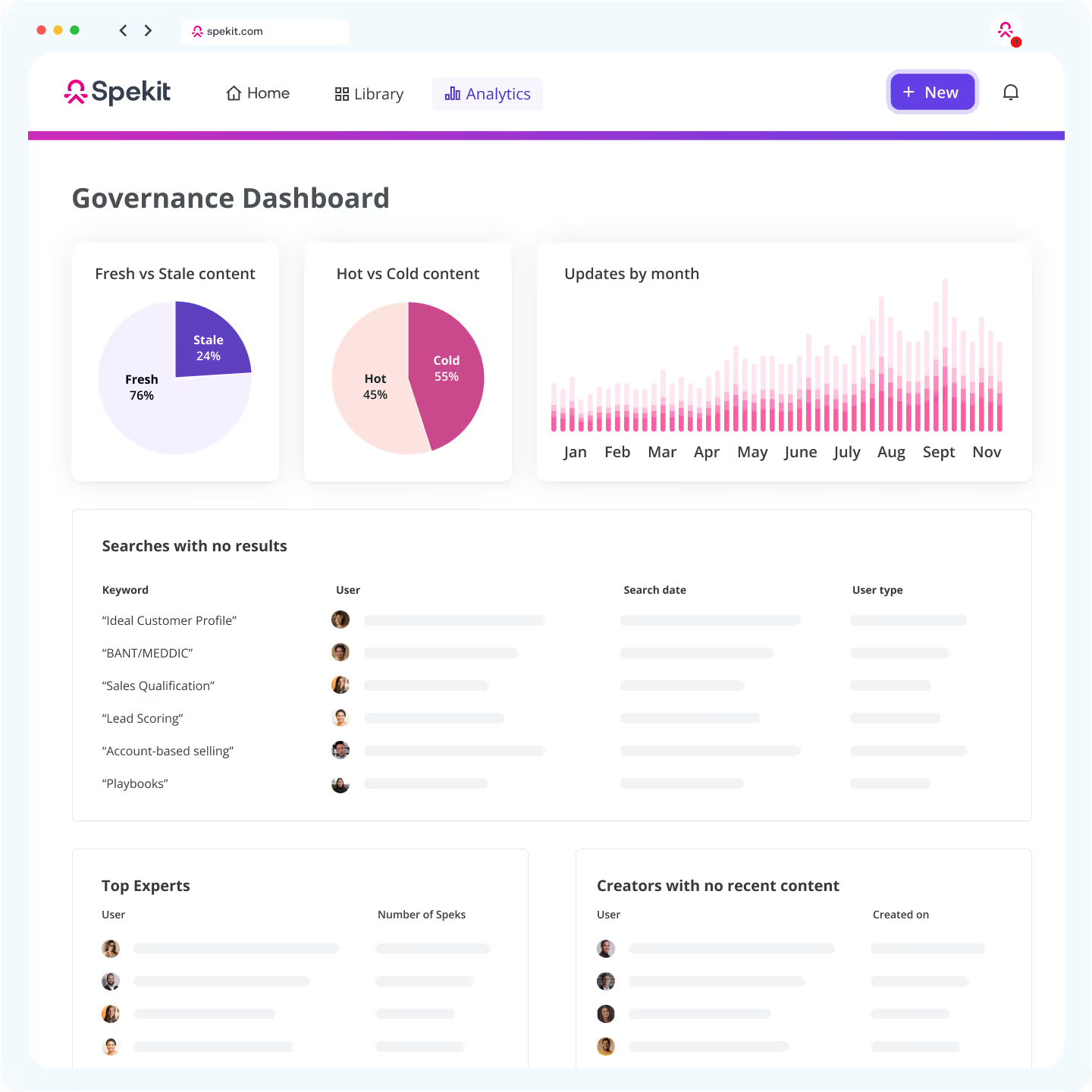
6. Revenue Insights & Analytics
The strongest enablement platforms connect activity to outcomes.
║┌┴¤│ď╣¤═°'s Revenue Insights tie buyer engagement, content usage, and enablement activity directly to influenced pipeline and closed-won deals in Salesforce. Dashboards reveal which content drives revenue and which initiatives need adjustment, finally making enablement ROI visible.
Leadership sees enablement impact, not just login counts.

7. Training & Continuous Learning
Modern enablement is continuous, not event-based. ║┌┴¤│ď╣¤═°'s Playlists deliver structured learning paths and in-app knowledge checks reinforce skills in real time.
Reps can access lessons anywhere they work, while managers track completion and comprehension from a single dashboard.
Learning in the Flow of WorkÔäó turns onboarding into ongoing readiness.
8. Collaboration & Integrations
Cross-functional collaboration is essential for consistent messaging. The right sales enablement platform connects sales, marketing, and customer success through shared content and analytics.
║┌┴¤│ď╣¤═° integrates with CRMs, communication tools, and enterprise SSOs, embedding enablement into the broader tech stack. Real-time sync ensures alignment across every customer-facing team.
A single source of truth that scales with your business.
9. In-App Alerts & Change Enablement
Change happens fast. ║┌┴¤│ď╣¤═°ÔÇÖs Spotlights notify reps of process updates, new assets, or competitive insights right in their workflowÔÇöno emails or meetings required. Targeted alerts drive accountability, and analytics show who viewed or dismissed each update.
Change management, built in by default.
The Bottom Line: Modern Enablement Means Measurable Impact
Legacy tools were built for ÔÇťjust-in-caseÔÇŁ training. ║┌┴¤│ď╣¤═° was built for Just-in-Time Enablement, connecting content, learning, and analytics directly inside the flow of work.
Organizations using ║┌┴¤│ď╣¤═° see:
- 69% more time spent selling
- 20% higher quota attainment
- 30% faster ramp times
- 3├Ś greater enablement adoption
When every rep can find, understand, and apply the right knowledge in real time, enablement becomes a competitive advantage, not another system to maintain.
Benefits of Modern Sales Enablement Software
The value of sales enablement has never been clearer. Yet, as The Impact of Enablement Report (2025) shows, many teams still struggle to prove ROI, largely due to fragmented content, low adoption, and disconnected systems.
Modern enablement isnÔÇÖt about adding another tool; itÔÇÖs about connecting people, content, and insights directly inside the flow of work. HereÔÇÖs how todayÔÇÖs best AI sales enablement platforms drive measurable results.

1. Increased Sales Productivity
The most immediate benefit of sales enablement software is productivity. Reps spend less time searching, switching tools, or verifying content and more time engaging buyers.
The Impact of Enablement Report found that 75% of sales leaders log into their enablement platform fewer than five times per quarter, proving that usability, not budget, is the barrier to adoption.
║┌┴¤│ď╣¤═° solves this by embedding knowledge, playbooks, and process guidance directly into the tools reps already useÔÇöSalesforce, Slack, Outlook, and Chrome.
- 69% more time spent selling
- 30% faster ramp time
- Fewer clicks and context switches across every task
When enablement happens in the flow of work, adoption and output rise naturally.
2. Better Sales Content Management
Traditional repositories lead to what the report calls ÔÇťcontent decayÔÇŁ ÔÇö where 48.8% of content requires a refresh and up to 80% goes unused.
║┌┴¤│ď╣¤═° eliminates this through intelligent content management with automated governance.
- Real-time syncing with Google Drive, SharePoint, and Confluence
- AI deduplication and freshness alerts
- Clear ownership and version tracking
With everything centralized, reps trust the content they use, and enablement teams can track which assets directly influence pipeline.
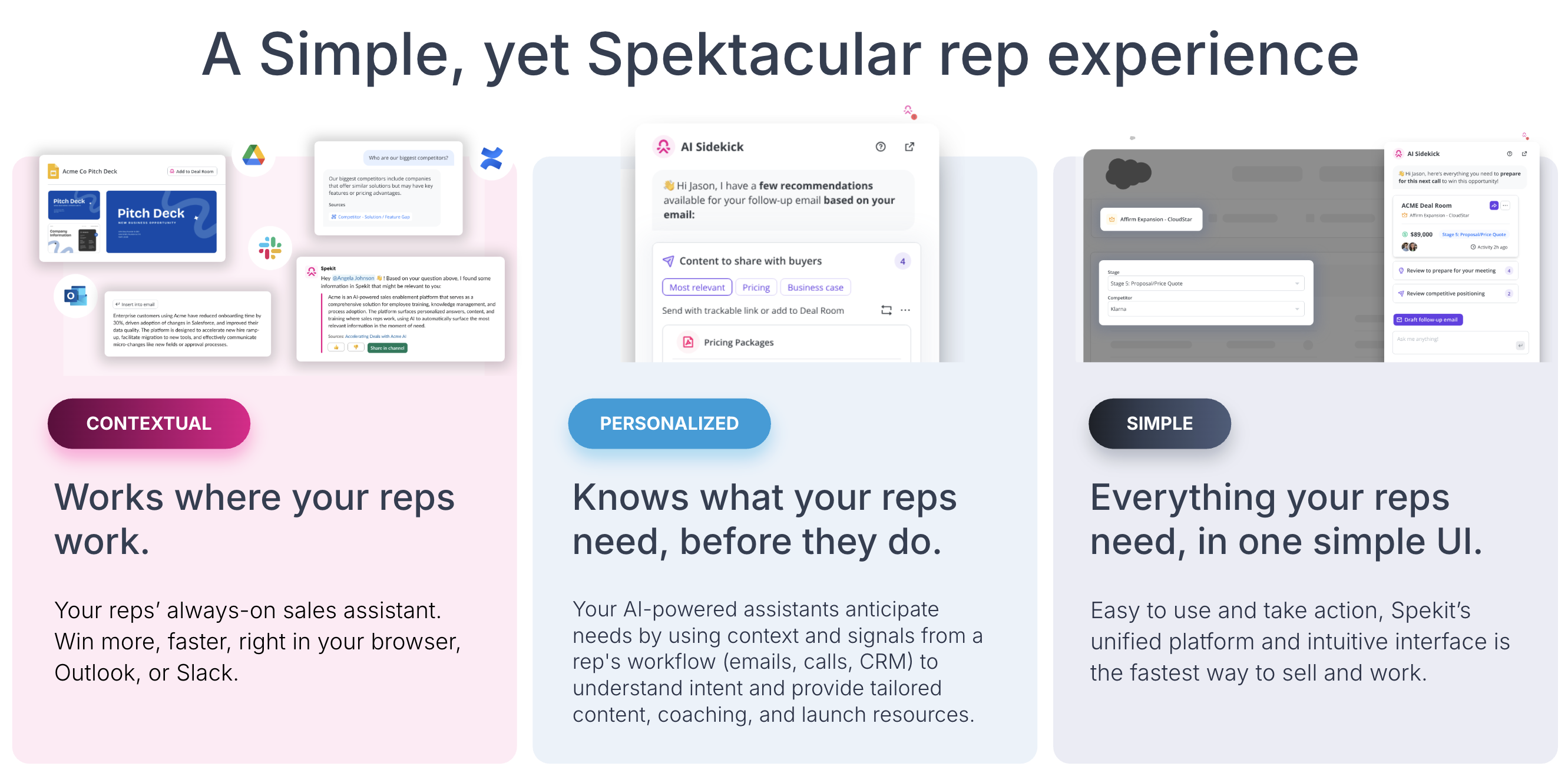
3. Data-Driven Insights & ROI Visibility
Legacy platforms track clicks; modern enablement measures impact.
║┌┴¤│ď╣¤═° Revenue Insights connects content usage, buyer engagement, and rep performance to influenced pipeline and closed-won revenue. Leaders can see which initiatives drive ROI and which need improvement, without manual reporting.
By contrast, The Impact of Enablement Report found that 42% of teams struggle to prove ROI because their platform lacks actionable reporting.
║┌┴¤│ď╣¤═°ÔÇÖs dashboards close that gap with:
- Buyer engagement analytics for shared content and Deal Rooms
- Team-level adoption and enablement metrics
- Clear visibility into which content moves deals forward
4. Stronger Collaboration Across Teams
The most successful revenue organizations unite sales, marketing, and customer success around a shared content source.
║┌┴¤│ď╣¤═° acts as that single hub. Teams can align messaging, update materials in real time, and deliver consistent buyer experiences without relying on email or static portals. Slack and CRM integrations ensure information flows automatically, keeping every function aligned on the same goals.
5. Built-In Scalability and Flexibility
Enablement must scale with your team and your tech stack.
║┌┴¤│ď╣¤═°ÔÇÖs modular structure, browser extensions, and enterprise integrations make it easy to deploy across departments without additional admin or IT lift. Whether rolling out a product update or onboarding 200 new hires, ║┌┴¤│ď╣¤═° grows with your business while maintaining performance and compliance.
6. Improved Customer Engagement & Experience
When reps have access to accurate, personalized content in real time, the customer experience improves across every stage of the journey.
║┌┴¤│ď╣¤═° empowers reps to deliver:
- Personalized content that aligns with buyer needs
- Consistent messaging that builds trust
- Timely follow-ups driven by real-time engagement alerts
With buyer engagement insights built directly into Salesforce, teams can identify what resonates and refine their strategy faster.
Choosing the Right Sales Enablement Platform
Selecting a sales enablement solution means identifying where your current process breaks down, content management, onboarding, or measurementÔÇöand finding a tool that connects those gaps.
According to Just-in-Time: The Future of Enablement in the World of AI, success depends on three capabilities:
- Access: Reps must find the right content in seconds.
- Relevance: Guidance must adapt to the context of the workflow.
- Visibility: Leaders must see how enablement drives revenue outcomes.
Only ║┌┴¤│ď╣¤═° delivers all three. It combines intelligent content management, AI-driven recommendations, and real-time reporting into one seamless experience.
Unlike legacy platforms that depend on logins or training modules, ║┌┴¤│ď╣¤═° surfaces enablement inside the tools your teams already live in, turning enablement from a destination into an everyday driver of performance.

